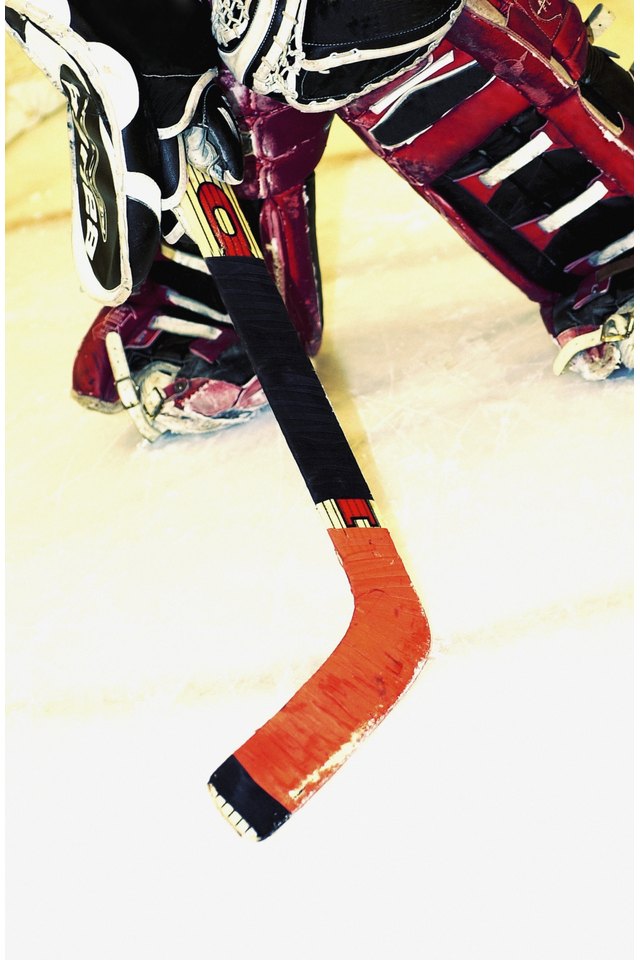Knee Hockey Rules

Knee hockey, also called mini hockey, helps you get your hockey fix when it's too hot for ice hockey or too cold for field hockey. Played indoors, knee hockey has players use smaller rinks and stay on their knees during the game. The rules are similar to standard hockey, but the close quarters and lack of mobility require a few differences.
Equipment
To play knee hockey, you don't need the thick pads and gloves used in standard hockey. A helmet with a face shield is required. You can wear knee and elbow pads if you like, but they aren't required. No shoes are allowed, but socks are required. All players must use mini hockey sticks, most of which are 18 inches long. Instead of a hard puck, players use a foam puck or foam ball.
Rink
Rink sizes vary based on local association rules and player preferences, but a standard rink size is 20 feet long by 14 feet wide. The game is played on a padded surface, such as a carpeted floor or a hard floor covered with a mat. The goals are placed on each end of the rink, just as they are in standard hockey, but the goals are smaller, typically 4 feet wide by 2 1/2 feet tall.
Game Play
Each team has up to three players, one who serves as goalie. The basic idea is the same as standard hockey: Knock the puck into the opposing team's goal. In tournament play, at least one knee must be on the ground at all times. In some local knee-hockey groups, you can stand up to move but must have a knee down to score. The players can use their hands as well as their mini sticks to touch the puck, which is different from standard hockey, although they can't throw it -- they must move the puck on the floor. Games include one 10- to 15-minute period, depending on the preferences of your tournament league, and there are typically two referees monitoring play. Knocking the puck out of bounds gives puck possession to the opposing team.
Penalties
Knee hockey is stricter on violence than traditional hockey. Players can't raise their sticks higher than waist level, and can't hit other players with the sticks. Most body contact is discouraged, although some is allowed; knocking a player aside with your shoulder is permitted, but pushing with your hand or hitting is not. You also can't use your knee to push an opponent out of the way. You're not allowed to grab or hold a player or his stick. Any of these infractions carries a one-minute penalty.
Considerations
Knee hockey is often played in unofficial games in living rooms, basements and locker rooms, although official leagues set tournament rules. The leagues tend to reflect the playing styles of the area instead of following a nationwide rule standard. This means rules tend to vary slightly, such as whether your knees must be down at all times or how many periods are played by each team. Check with your local knee hockey league to confirm the rules of play.
